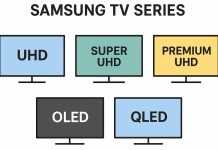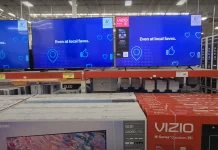Viewing angles TVs
All manufacturers indicate the viewing angle of the TV. Of course, the parameters indicated by some manufacturers cannot be taken seriously, the viewing angle for example, 178 degrees. You will see only 1% of the screen and of course will not be able to see anything. All such large numbers are needed only to attract customers. Some manufacturers simply indicate that televisions have a wide viewing angle, without specifying specific numbers.
The figure shows the viewing angle of the TV 178 degrees as you see, if you look at the maximum angle from the side, you can not see anything on the screen. Vertical it is very rare when the viewing angle of the TV exceeds 10 ° and is almost never taken into account in tests, but keep in mind that when changing the viewing angle vertically, the image quality also changes.
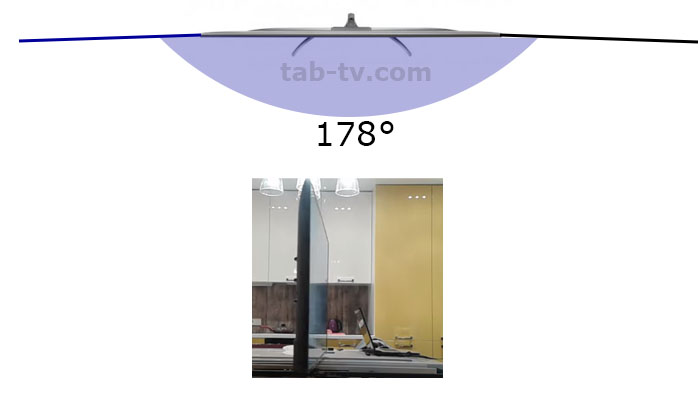
Viewing angle measurement parameters
When watching TV at an angle, you need to consider several parameters, and not just the viewing angles. Although briefly there are only two real parameters, image distortion and image quality changes. Image quality can be decomposed into several parameters, these parameters are interrelated.
The greatest influence on image quality is exerted by such parameters as image distortion, color shift, shift of the gamut of tones, shift of colors on the screen, decrease in black level, fading (fading) of the image.
| Allowable viewing angle% | Allowable viewing angle% | Allowable viewing angle% | Allowable viewing angle% | |
|---|---|---|---|---|
| OLED | QLED | LED IPS | LED VA | |
| color gamut shift | 60 | 30 | 40 | 20 |
| black level reduction | 70 | 25 | 70 | 25 |
| color shift | 30 | 25 | 60 | 25 |
| dimming | 65 | 35 | 50 | 35 |
| image fault | 30 | 30 | 30 | 30 |
| discoloration of the image | 50 | 35 | 30 | 25 |
Image distortion on TV
When watching TV from the side, the details of the image on the screen become flat and the larger the angle, the more the image is distorted. Also, due to a change in viewing perspective, the aspect ratio of the image changes. This applies to all types of screens. The optimum viewing angle of the TV is 0 °, you are right in front of the screen. The maximum viewing angle when most viewers still do not notice obvious discomfort up to 30 °.
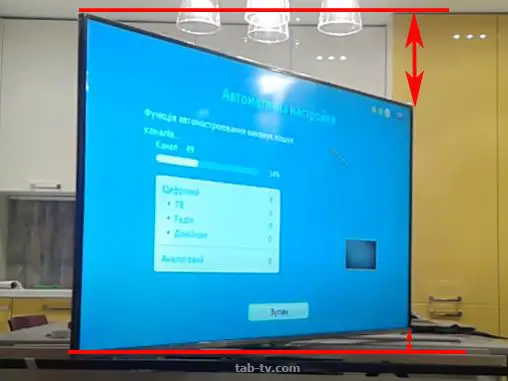
Gamma shift
Changing the range of color shades depends on the technology of manufacturing matrixes of screens. When viewed at an angle, some shades change more than others. The range of colors shifts most in LED screens made by VA technology. QLED is also a VA, but the use of advanced materials has expanded the range. The best options for OLED screens. In OLED, all shades change almost the same, and a person does not notice the change.
The parameter can vary from 20 ° to 60 ° depending on the type of screen. The parameter indicates at what angle of viewing the TV the viewer will notice a change in the gamma of the hue. As a rule, the majority begins to notice changes if the gamma has changed by 15% or more.
Screen color shift
When viewed at an angle, some colors may vary, most noticeable in bright pictures. For example, the white color begins to take on a different color, for example with a greenish tint.
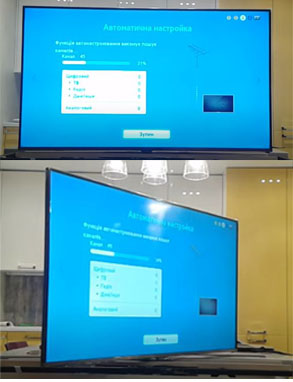
A color shift on the screen is noted when the color changes by more than 15% of the original image. A leader among IPS displays, screen manufacturing technology provides wide viewing angles without color distortion. All other screens show almost the same parameters.
Black level reduction
The matrixes of screens are made so that when viewed at an angle, the luminous flux is reflected from neighboring pixel cells. When viewed from the side of the TV, the black color takes on a gray tint. This is the biggest problem with LED, QLED screens.
Fading colors on the TV screen
This parameter means that when viewing at an angle, the colors lose their saturation, several factors affect this, the reflection of the light flux and the change in black level.
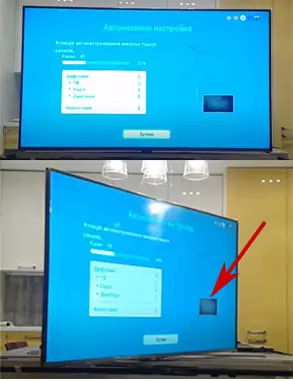
When the saturation of the picture changes by more than 10%, a person already notices the changes. Of course, OLED screens in this setting are leaders in quality and provide the greatest viewing angles.


